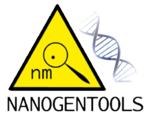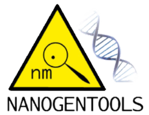[su_frame align="left"] [/su_frame]
[/su_frame]
The School of Geography Earth and Environmental Sciences (GEES) at the University of Birmingham has 60 academic staff, 28 technical and support staff and 24 research staff and achieves international excellence in teaching and research as demonstrated in the UK-wide recent Research Excellence Framework results (December 2014) confirmed that 95% of the University’s research has been designated as work leading or internationally excellent, meaning it is recognised internationally in terms of its originality, significance and rigour, as well as its status as Sunday Times University of the Year 2013/2014. A particular expertise within GEES is environmental nanoscience, which will feed directly into this project. The environmental nanoscience group consists of 1 full professor, 1 Lecturer, a facility manager, 3 postdoctoctoral researchers and 20 PhD students. The group runs FENAC, the UK analytical facility for environmental nanoscience.
[su_service title="Key People" icon="icon:user" icon_color="#08c" size="24" ]
Dr. Iseult Lynch, Senior Lecturer in Environmental Nanosciences at School of Geography, Earth and Environmental Sciences of University of Birmingham. She has a very broad overview of all aspects of Nanomerials safety assessment and the data requirements, having served as Chair of the EU Nanosafety Cluster Working Group (NSC WG) on databases for the last 2 years (and as co-Chair of the Hazed WG prior to that), as well as being theme editor for the Materials and classification section of the NSC Vision2020 research roadmap (under review for publication in June 2013). Prior to the University of Birmingham she was Strategic Research Manager at the Centre for BioNano Interactions in University College Dublin, where she was instrumental in the development and implementation of the QualityNano research infrastructure for nanosafety assessment.
Eva Valsami-Jones, Chair in Environmental Nanoscience, Director of Research, Director of FENAC. She joined UoB in September 2011 as Professor of Environmental Nanoscience. Prior to this position, she was an Individual Merit Researcher at the Natural History Museum of London. Her core research interests focus on understanding the reactivity of NMs and the mechanisms involved in their potential toxicity. She led the team which developed a series of high specifications reference nanoparticles for toxicological studies, including the first synthetic stable-isotope labelled nanoparticles (ZnO, CuO and Ag). Professor Valsami-Jones’ research interests focus on understanding reactivity at the nanoscale, particularly interactions of nanoparticles with pollutants and biota and biomineralisation processes. She has carried out research on the interaction of a variety of carbon- and metal-based nano-objects with biota in vitro and in vivo and has pioneered novel methods of labelling nanomaterials. She has also worked on understanding the formation and stability of biogenic apatite.
[/su_service]
[su_service title="Involvement in Research and Innovation projects" icon="icon:gears" icon_color="#08c" size="24" ]
[su_list icon="icon:caret-right" icon_color="#08c"]
- NanoBEE - US-UK project aimed at manufactured nanoparticles in the natural environment and funded by the USEPA, NERC, EPSRC, DEFRA and the Environment Agency Budget: c. 3M£
- QualityNano – A pan-European infrastructure for quality in nanomaterials safety testing
- NanoValid - Reference methods for hazard identification, LCA and risk assessment of NMs
- FABLE - From Airborne Exposures to Biological Effects: the impact of nanoparticles on health (UK NERC-MRC NE/I008314/1), 36 months, value c. £1.7M (at UoB)
- Marina - Addresses the central themes for the Risk Assessment and Management of NMs
- NanoTOES ITN, FutureNanoNeeds, NanoDefine and may others.
[/su_list]
[/su_service]
[su_service title="Publications and/or research/innovation products" icon="icon:book" icon_color="#08c" size="24" ]
[su_list icon="icon:caret-right" icon_color="#08c"]
- Hu W, Culloty S, Darmody G, Lynch S, Davenport J, Ramirez-Garcia S, Dawson KA, Lynch I, Blasco J, Sheehan D. Toxicity of copper oxide nanoparticles in the blue mussel, Mytilus edulis: A redox proteomic investigation. Chemosphere. 2014 Feb 26. [Epub ahead of print
- Mahmoudi M, Quinlan-Pluck F, Monopoli MP, Sheibani S, Vali H, Dawson KA, Lynch I. Influence of the physiochemical properties of superparamagnetic iron oxide nanoparticles on amyloid β protein fibrillation in solution. ACS ChemNeurosci. 2013 Mar 20;4(3):475-85
- Stefaniak AB, Hackley VA, Roebben G, Ehara K, Hankin S, Postek MT, Lynch I, Fu WE, Linsinger TP, Thünemann AF. Nanoscale reference materials for environmental, health and safety measurements: needs, gaps and opportunities. Nanotoxicology. 2013;7(8):1325-37
- García-Alonso J, Rodriguez-Sanchez N, Misra SK, Valsami-Jones E, Croteau MN, Luoma SN, Rainbow PS. Toxicity and accumulation of silver nanoparticles during development of the marine polychaete Platynereisdumerilii. Sci Total Environ. 2014 Apr 1;476-477:688-95
- Lynch, I., Weiss, C, Valsami-Jones, E. A strategy for grouping of nanomaterials based on key physicochemical descriptors as a basis for safer-by-design NMs. Nano Today 2014, 9, 266-270
[/su_list]
[/su_service]

